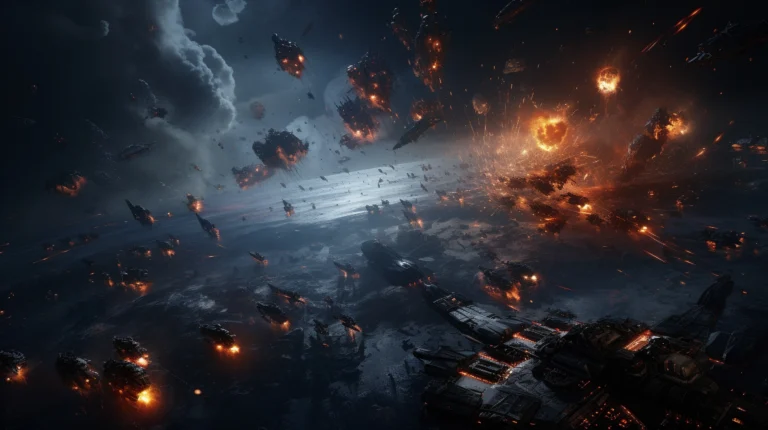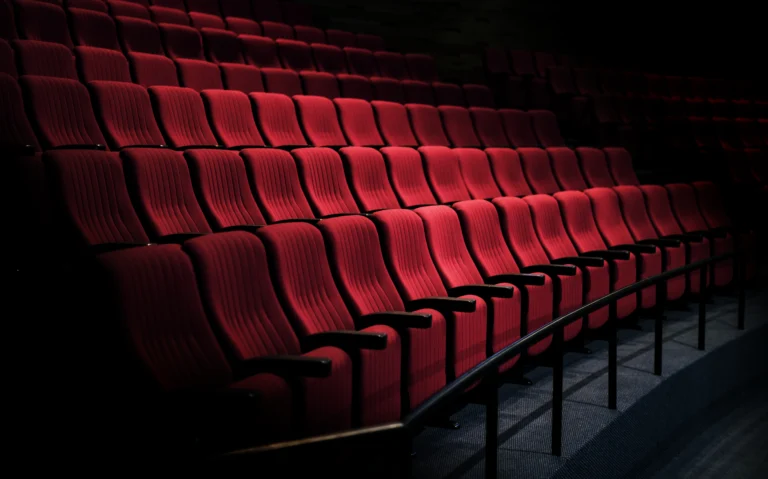Action and Adventure Action Sequences in Cinema – Before CGI and complex wirework, action in cinema was raw, physical, and dangerously real. Silent film legends like Buster Keaton and Harold Lloyd pushed physical comedy and stunts to the limit, setting the foundation for modern action storytelling. Keaton’s “Steamboat Bill, Jr.” (1928) features the iconic falling house stunt — a moment that continues to inspire filmmakers for its simplicity and real-world danger.
As cinema evolved, so did the ambition of action scenes. By the 1960s and 70s, directors like John Frankenheimer in Ronin (1998) redefined the car chase, blending realism with fast-paced editing. And let’s not forget the game-changing impact of “Bullitt” (1968), where Steve McQueen’s driving sequence through San Francisco’s hills is still referenced in modern action films.
When Did the Genre Turn into a Blockbuster Machine?
The late 70s and 80s marked the arrival of action as a commercial force. Thanks to filmmakers like George Miller, whose Mad Max series redefined post-apocalyptic chaos, and John McTiernan with Die Hard (1988), action gained narrative weight. These weren’t just shootouts — they were character-driven survival stories. Die Hard made Bruce Willis’ everyman cop iconic, and its influence is still visible in today’s hostage or single-location thrillers.
Notably, the 1980s introduced us to larger-than-life heroes — think Sylvester Stallone in Rambo or Arnold Schwarzenegger in Commando — who embodied physical strength and explosive spectacle. These sequences weren’t subtle, but they were unforgettable.
How Realism and Choreography Changed Everything
By the 2000s, filmmakers started blending realism with stylized choreography. Paul Greengrass, with the Bourne series, brought shaky cam and fast-cut realism, while directors like Zhang Yimou (Hero, House of Flying Daggers) injected elegance and operatic beauty into combat.
The rise of fight choreographers and stunt coordinators as creative leaders changed the game. Chad Stahelski, a former stuntman, directed John Wick (2014), combining clean visuals with complex gun-fu choreography, creating a franchise now cited as a gold standard in modern action cinema.
The Role of Technology in Action Sequences
CGI: Blessing or Curse?
Computer-generated imagery (CGI) exploded in the late 90s, but its influence on action sequences is debated. On one hand, it allowed for visually spectacular moments like the freeway chase in The Matrix Reloaded (2003), or the mind-bending dream collapses in Christopher Nolan’s Inception (2010) — a director known for mixing practical and digital effects.
On the other, excessive CGI has often led to bloated action scenes lacking weight. Critics often point to Marvel Cinematic Universe films, which, while commercially successful, sometimes prioritize quantity over the tactile realism seen in earlier cinema. The debate continues: should action thrill with practical danger or digital imagination?
Motion Capture and the Human Element
Another breakthrough came with motion capture, allowing actors like Andy Serkis to deliver emotionally complex performances in high-octane settings. While not always considered “action” in the traditional sense, his work in Planet of the Apes or King Kong brought new depth to action-based storytelling.
IMAX and Camera Innovations
Technological advances in camera equipment have also redefined how action is filmed. IMAX sequences in Mission: Impossible – Fallout (2018) or Tenet (2020) immerse viewers in a visceral, larger-than-life experience. Tom Cruise’s insistence on performing real stunts — like the halo jump or clinging to a plane — underscores a return to authenticity even in an age dominated by VFX.
Cultural Influence: How Action Reflects Societal Values
What Do Action Sequences Say About a Nation?
Action films often mirror a society’s fears, hopes, and national identity. The post-9/11 era, for instance, saw a rise in morally complex heroes and darker, grittier tones. The Jason Bourne trilogy reflected global concerns about surveillance and government overreach, while The Dark Knight (2008) echoed fears of chaos and terrorism in urban landscapes.
In the U.S., action heroes shifted from invincible juggernauts of the 80s to more conflicted, vulnerable protagonists. Compare Schwarzenegger’s Terminator to Christian Bale’s Batman. The latter is deeply flawed and emotionally complex, echoing a modern public more skeptical of simple heroism.
In contrast, South Korean action cinema blends melodrama and hyperviolence with social commentary. The Man from Nowhere (2010) and Oldboy (2003) deliver intensely choreographed sequences that aren’t just thrilling — they’re emotional gut punches. These films have grown popular worldwide due to their ability to blend kinetic style with deep character arcs.
Eastern vs. Western Approaches
Eastern cinema traditionally values fluidity and elegance in combat. Martial arts epics like Crouching Tiger, Hidden Dragon (2000) or The Raid (2011) are stylistically different but both reflect a culture where discipline, tradition, and physical mastery are central.
Meanwhile, Western films often focus on scale and spectacle. Think of the chaotic urban warfare in Heat (1995), or the epic war sequences in Saving Private Ryan (1998). While both traditions have influenced each other — particularly in recent decades — the core storytelling values remain distinct.
Globalization of Action Cinema
Streaming platforms like Netflix and Amazon Prime have democratized global access to international action hits. Audiences now devour Spanish thrillers (Sky High), Indian blockbusters (RRR), and Japanese anime with action sequences that rival Hollywood’s best.
This cross-pollination has enriched the genre. Extraction (2020), a Netflix hit starring Chris Hemsworth, was directed by Sam Hargrave, a stuntman-turned-director — echoing the John Wick approach. It featured one-shot sequences influenced by The Raid, showing how Asian and Western styles now blend seamlessly.
Iconic Action Moments That Changed the Game
Which Action Scenes Are Considered Milestones?
Certain sequences in cinema history didn’t just entertain — they redefined what was possible. These are moments where technique, innovation, and storytelling came together in unforgettable ways.
Take the heist and truck chase in The Dark Knight (2008). Shot using IMAX cameras and minimal CGI, the scene blended precision stunt driving with narrative tension. Christopher Nolan famously flipped an actual 18-wheeler in downtown Chicago — a moment that remains a practical effects triumph.
Another milestone? The hallway fight in Park Chan-wook’s Oldboy (2003). Shot in a single take, the protagonist battles a corridor full of attackers with just a hammer. The sequence is brutally grounded and emotionally draining — a stark contrast to Hollywood’s polished choreography.
What Makes a Great Action Sequence Memorable?
It’s not just explosions or flashy moves. The best sequences are driven by character and stakes. When Mad Max: Fury Road (2015) unleashed its desert chase, it wasn’t just a visual spectacle — it was an emotional journey. George Miller spent years designing every frame to serve the story, and the result won six Academy Awards — including Best Editing and Best Production Design.
Another great example is the stairwell fight in Atomic Blonde (2017). The sequence lasts nearly 10 minutes, filmed to appear as one continuous shot. Charlize Theron trained for months to perform the brutal choreography herself, lending authenticity and physicality rarely seen in Hollywood action led by female protagonists.
Has the Franchise Formula Hurt Action Creativity?
While franchises like Fast & Furious and the MCU deliver high-octane spectacles, they’re often criticized for formulaic sequences. Repetitive CGI destruction can blur together, diluting impact. However, exceptions exist. The Fast Five (2011) vault heist in Rio de Janeiro broke new ground in stunt complexity and international appeal — helping revive the franchise as a global juggernaut.
In contrast, directors like Denis Villeneuve (Sicario, Dune) are reimagining action with a slower, suspenseful rhythm — using silence, tension, and scale as weapons in their cinematic arsenal.
The Future of Action and Adventure in Cinema
Are Audiences Changing What They Expect From Action Films?
Today’s audiences are more media-literate than ever. Viewers are no longer impressed by noise and chaos alone — they crave innovation, emotional resonance, and originality. That’s why films like Everything Everywhere All at Once (2022), which combined multiverse chaos with martial arts and family drama, received both critical acclaim and audience love, ultimately winning Best Picture at the Oscars.
We’re seeing a return to action sequences that aren’t just technical showcases, but deeply woven into the characters’ arcs. Emotional storytelling is taking center stage, with physical conflict reflecting internal struggle — a welcome shift from the hollow action spectacles of the mid-2010s.
The Rise of Auteur-Driven Action
Action is no longer just the domain of studio blockbusters. Filmmakers like Gareth Evans (The Raid), *Nicolas Winding Refn (Drive), and David Leitch (Bullet Train) are crafting unique visual identities within the action space. Their work proves that action can be both commercial and deeply artistic.
Even auteurs who weren’t traditionally action-oriented, such as Greta Gerwig or Jordan Peele, are now incorporating moments of kinetic energy into their storytelling — hinting at a cinematic future where genre lines blur more freely.
Action Beyond the Big Screen
The rise of streaming and high-budget television has also redefined where action lives. Series like Reacher, Jack Ryan, and The Mandalorian offer blockbuster-level action at home. HBO’s The Last of Us, for instance, delivers emotionally driven, cinematic-quality sequences that rival any big-screen production.
What does this mean for the future? Likely, we’ll continue to see a balance of intimate storytelling and innovative spectacle — not just in theaters, but across all platforms.
So, What Defines a Truly Great Action Scene Today?
It’s no longer about being bigger — it’s about being smarter. Great action scenes reveal character, raise stakes, and move the story forward. They’re tightly edited, beautifully choreographed, and emotionally grounded. Whether it’s a rooftop chase in Skyfall, a neon-soaked battle in John Wick, or a slow-motion moment of sacrifice in 1917, the essence remains the same: connection, impact, and tension.
Action and adventure sequences are more than just explosions and gunfire — they are a language of motion, tension, and emotional release. From silent-era stunts to the digital marvels of today, these scenes have always reflected our evolving cinematic tastes and cultural concerns.
As we move into an era of hybrid storytelling and globalized cinema, action is evolving with us — becoming more poetic, more diverse, and more emotionally rich. Whether you’re in it for the adrenaline or the artistry, one thing is clear: the best is yet to come.

